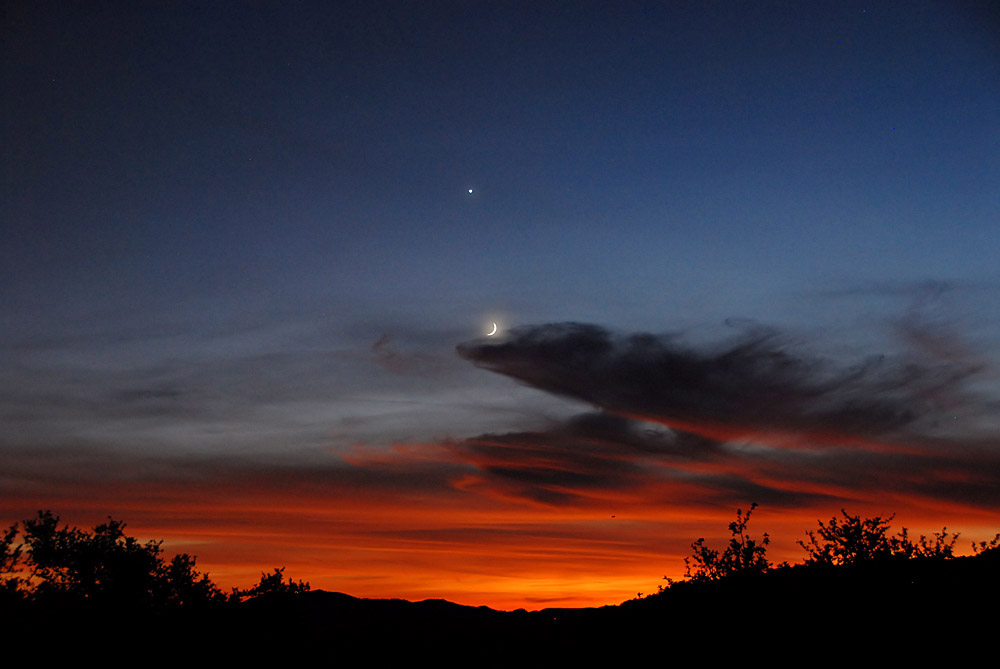
Orange Sky on Halloween, 2008, with Moon & Venus

The crescent moon is 9% illuminated.
Above: Davis Mountains, October 31, 2008 at about 7:50 p.m. Nikon D200 camera, Nikon 18-200mm VR lens (tripod mounted, VR off), f4.2, ISO 400, 0.5 sec exposure.


Above: Davis Mountains, October 31, 2008 at about 8:42 p.m. Nikon D200 camera, tripod mounted Nikon 300mm f4 ED lens, f4, ISO 800, 8 sec (top/left) and 13 sec (lower/right) exposures. Once again I had trouble choosing which image I liked best so I'm posting both. I've decided the first picture is the moon setting (ridge is blurred), and the second picture is the moon setting over a ridge (the ridge is sharp). They're different subjects, so two pictures is OK ;-)
Below: Images with my Takahashi TOA 130 Telescope (a 5" APO refractor telescope), AP 900GTO mount, QHY8 CCD Camera. Other pictures from the camera are are here. Images processed using my Astronomy Image Processing Workflow.
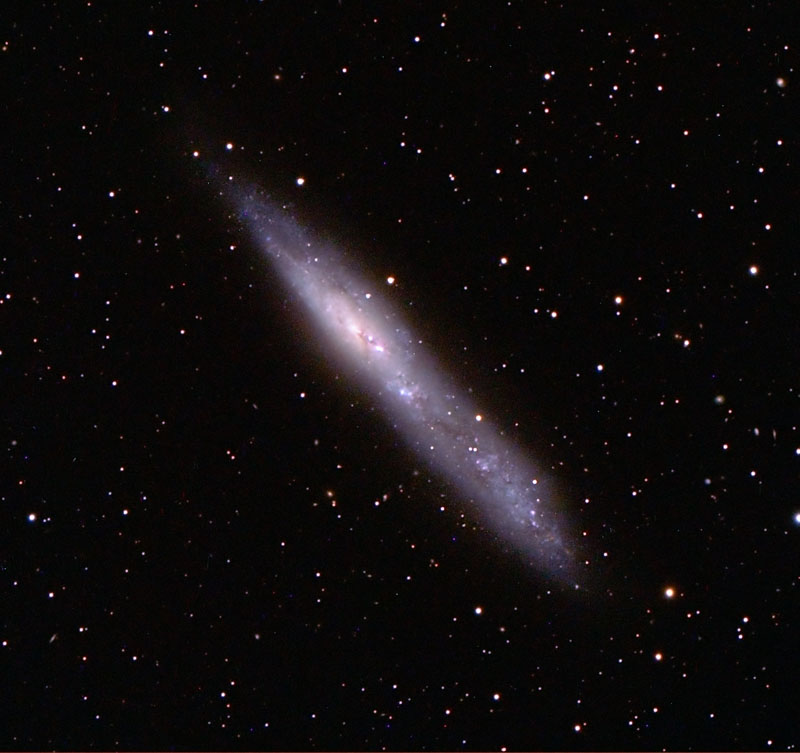
For US locations this galaxy is very low in the southern sky between Sculptor and Phoenix. NGC55 is an irregular galaxy thought to be 6 million light years away, and a member of the Sculptor Galaxy Group. It was at most 20 degrees above the horizon during imaging and was one of the "southern challenges" I like to go after when I can. 32x5 minutes, just over 2.5 hours total exposure, with the QHY8 CCD camera.
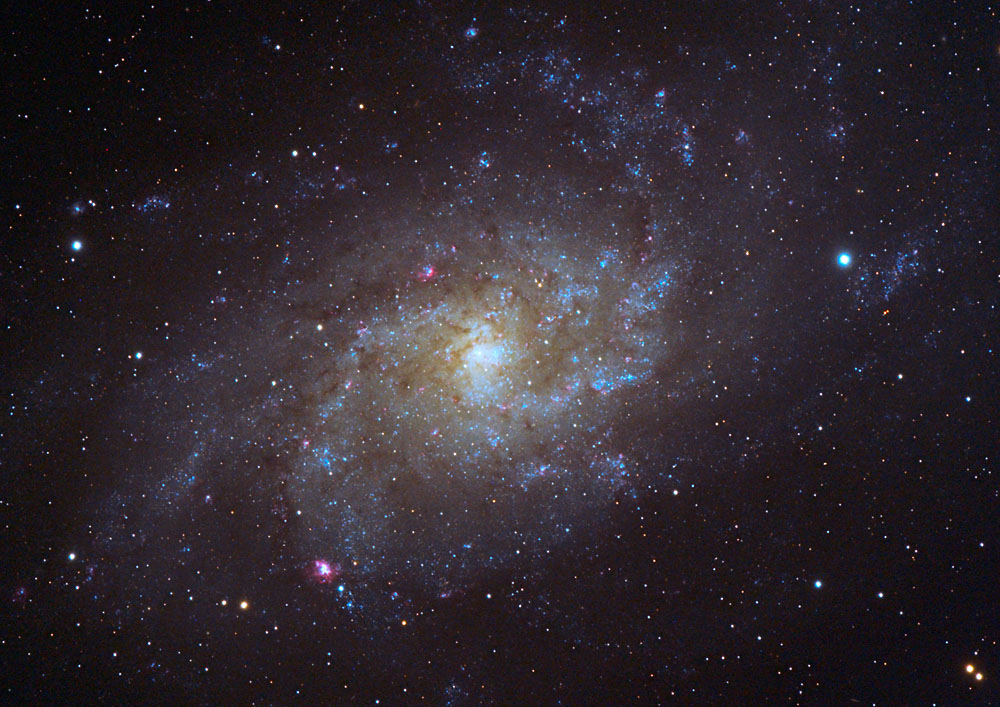
14 x 5 minute frames with the 1.6x, 28 with the flattener, for 3.5 hours total exposure. I went a bit heavy on the cyan during processing, but I kind of like it. See My main M33 Picture Page and information here.
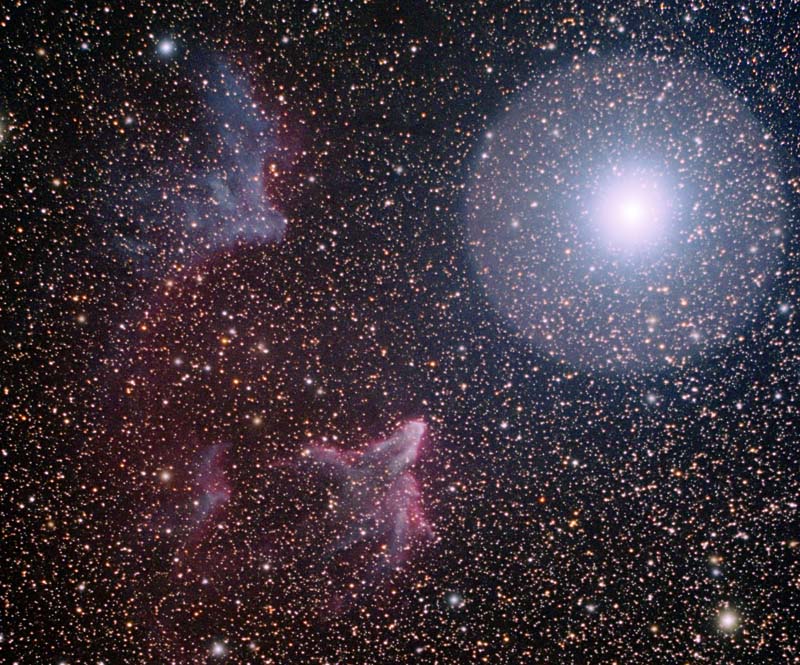
IC59 is top left and IC63 lower middle, with Navi, 27-gamma Cassiopeia as the mag 2 star on the right. 33x5 minutes, or 2.75 hours total exposures. This is very dim and you have to be crazy to try it... From October 2008, Davis Mountains.
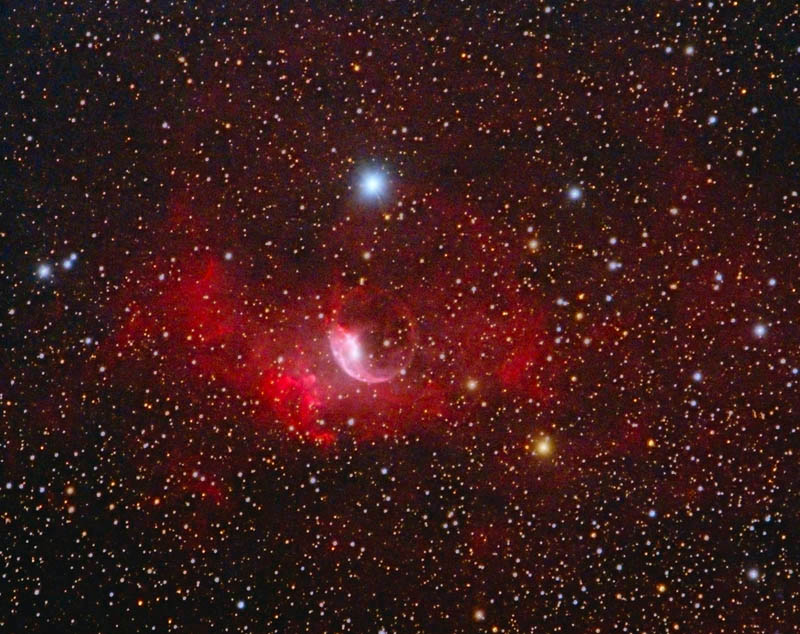
More info on the bubble nebula and this picture is here.
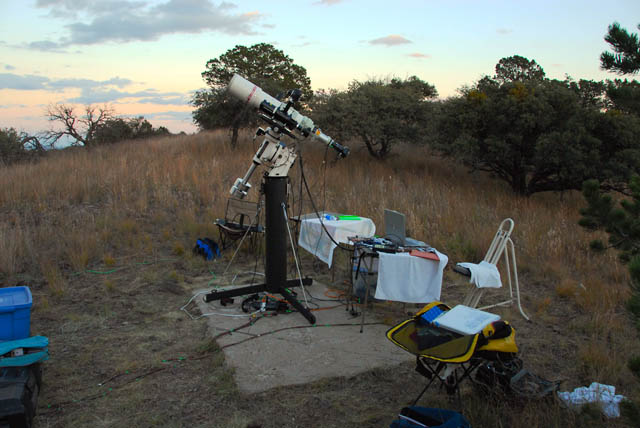
Here's where I set up in the Davis Mountains. This is looking east, where the horizon is maybe 5-7 degrees. The trees don't really matter since blue mountain is on the other site of them to the southeast of the site. This page has more pictures of the blue mountain area. This site generally has an excellent southern horizon, getting to zero degrees or better for a ways: both low and dark. The bad news is that I always feel compelled to try for some low & difficult objects while I'm there ;-)
Main West Texas Scenic Picture Page is here
Dick Locke's Astrophoto Gateway page....
Images Home
Contact and Image Use Information